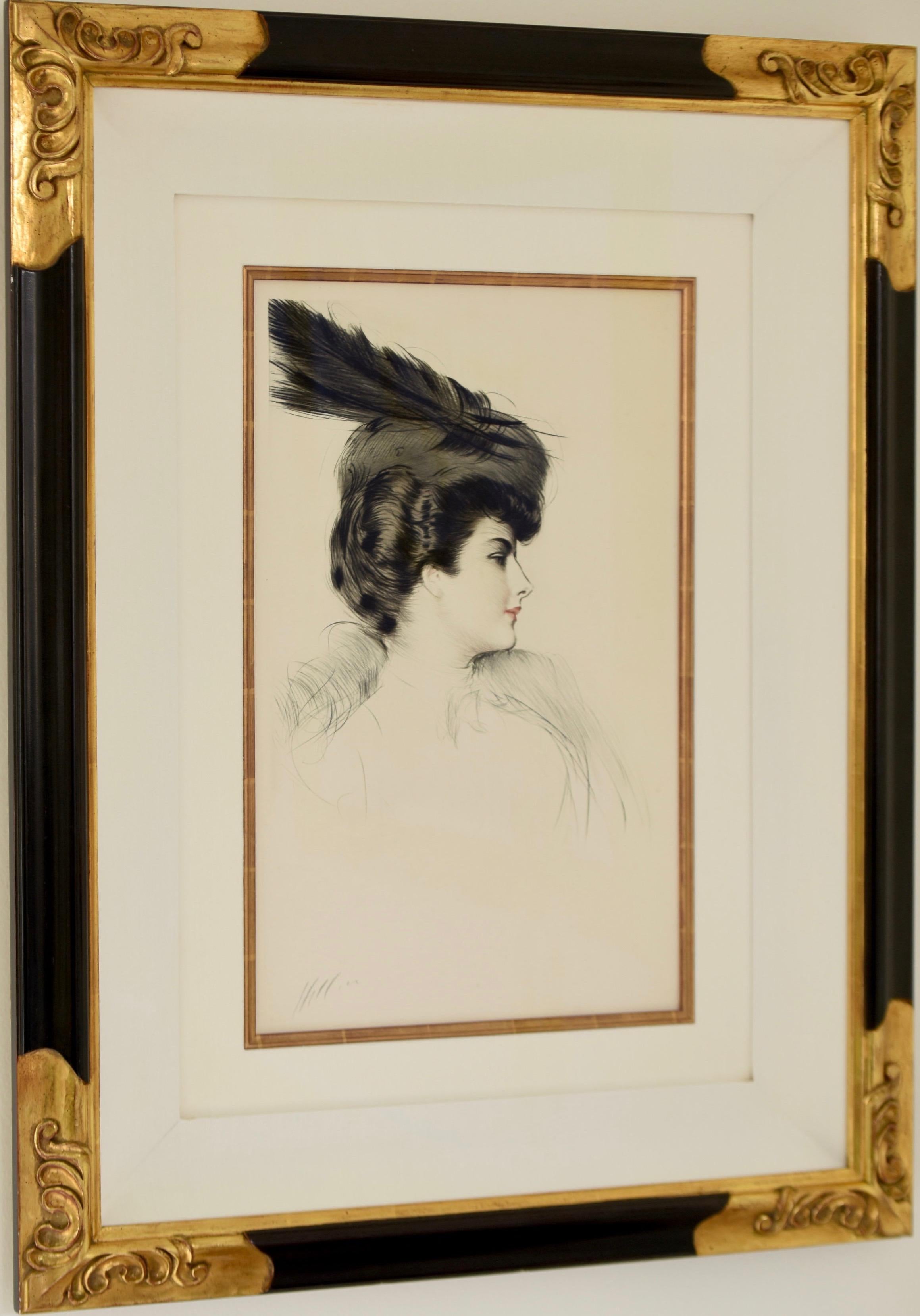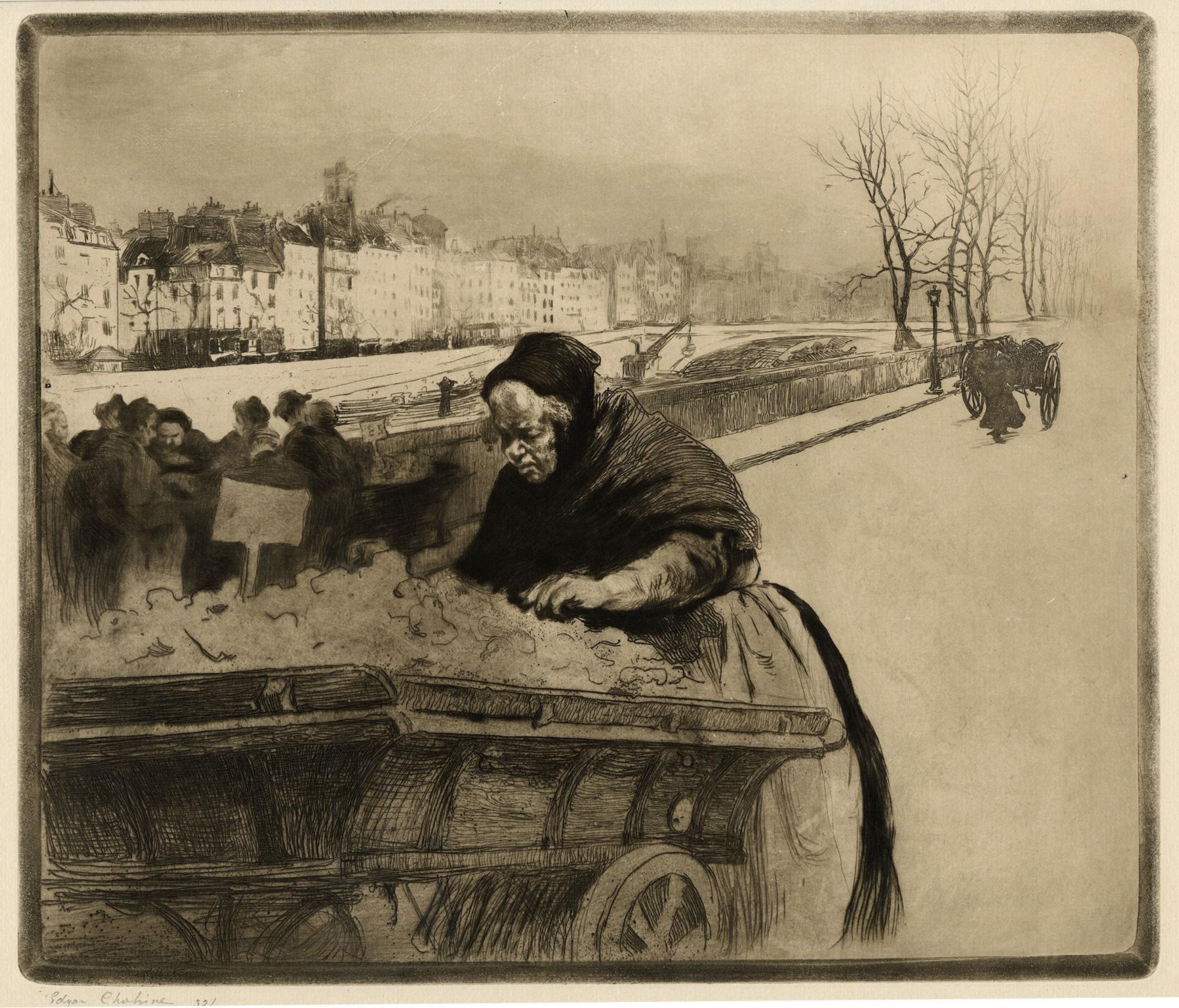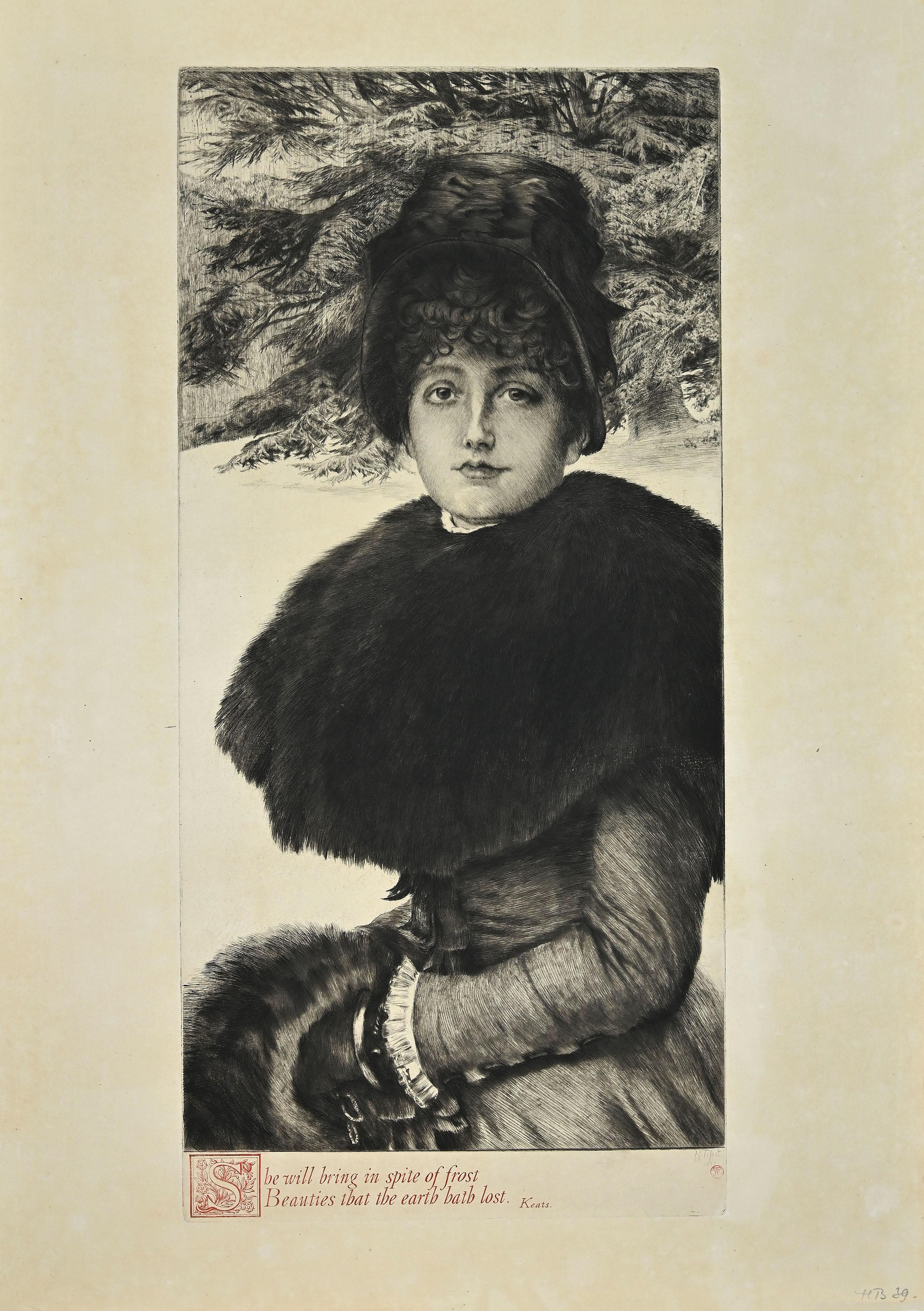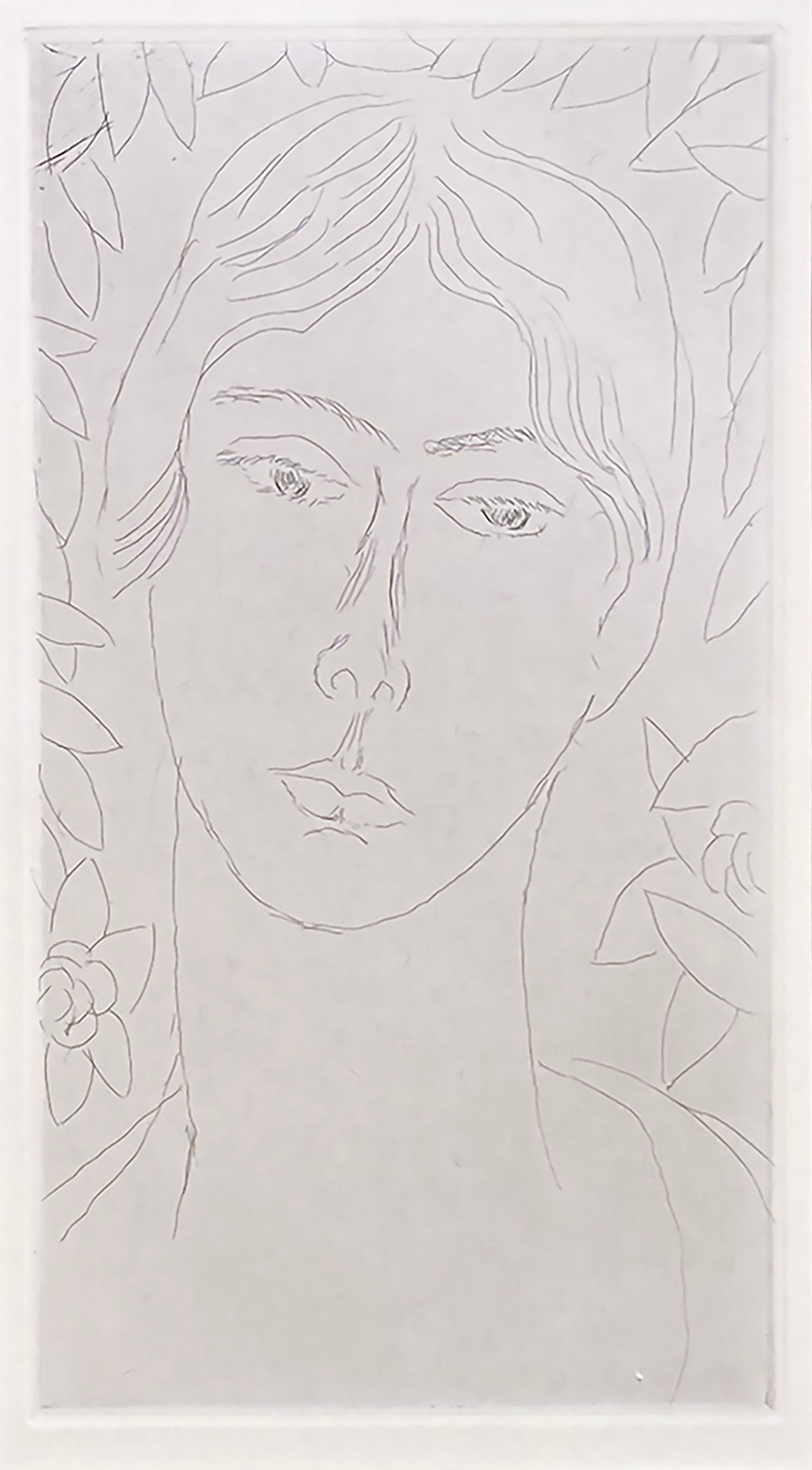Ludovic-Rodo PissarroYork Road by Ludovic-Rodo Pissarro - Wood engravingcirca 1918
circa 1918
About the Item
- Creator:Ludovic-Rodo Pissarro (1878 - 1952, French)
- Creation Year:circa 1918
- Dimensions:Height: 5.2 in (13.2 cm)Width: 3.55 in (9 cm)
- Medium:
- Movement & Style:
- Period:
- Condition:
- Gallery Location:London, GB
- Reference Number:1stDibs: LU261213476372
Ludovic-Rodo Pissarro
Ludovic-Rodolphe Pissarro, born in Paris in 1878, was influential French Impressionist painter Camille Pissarro’s fourth son. Encouraged by his father, he began drawing from nature at an early age. He was familiarly known as “Rodo” and generally signed his works "Ludovic-Rodo,” or early on in his career, "Rodo.”
The impact of Camille’s art and teaching on Rodo was considerable, and his artistic production encompassed a wide range of media, including oil painting, tempera, watercolour, gouache, wood engraving, drawing and lithography. Rodo exhibited regularly at the Salon des Indépendents over a 40-year period.
In 1894, at the age of 16, Rodo published his first wood engravings in the anarchist journal, Le Père Peinard. When Camille left France for the safety of Belgium during the anarchist upheavals of the same year, Rodo joined him there.
Rodo moved into his first studio in Montmartre with his brother Georges in 1898. He found the nightlife of Paris and the habitués of the cafes, theatres, circuses and cabarets of the area compelling subjects for his work. With his younger brother, Paulémile, Rodo met artists such as Kees van Dongen, Maurice de Vlaminck and Raoul Dufy. In 1905, he participated in the first Fauve exhibition at the Salon des Indépendants.
At the outbreak of the War in 1914, Rodo moved to England. Over the next few years, he lived mainly in and around West London. He worked closely with his brother, Lucien, to establish, in 1915, the Monarro Group, formed with the aim of exhibiting work by contemporary artists inspired by Impressionism. Many of the works, produced by Rodo while he was in England, were of major London landmarks. After 1924, when Rodo had already returned to France, he divided his time between Paris and Les Andelys in Normandy. Despite his rich artistic heritage and his achievements as an artist, Rodo is perhaps best remembered for his contribution to art history. For 20 years, he researched and compiled a catalogue of his father’s paintings – a project that was finally published in two volumes in 1939 — and is still considered to be the definitive reference book on Camille’s work. Rodo told Lucien that the compilation of this catalogue was a fascinating task, revealing as it did “the work of the artist, its highs and lows, its progress, as a whole, through acquired experience.”
(Biography provided by Stern Pissarro Gallery)
- ShippingRetrieving quote...Ships From: London, United Kingdom
- Return PolicyA return for this item may be initiated within 7 days of delivery.
- Print by Georges Manzana Pissarro 'La Bergère Turque' (The Turkish Shepherdess)By Georges Henri Manzana PissarroLocated in London, GB'La Bergère Turque' (The Turkish Shepherdess) by Georges Manzana Pissarro (1871-1961) Etching 33.5 x 27 cm (13 ¼ x 10 ¾ inches) Signed lower left, Manzana Pissarro, titled and inscri...Category
1920s Post-Impressionist Animal Prints
MaterialsEtching
- After Tea by Ludovic-Rodo Pissarro - Wood engravingBy Ludovic-Rodo PissarroLocated in London, GBAfter Tea by Ludovic-Rodo Pissarro (1878-1952) Wood engraving 12 x 13.2 cm (4 ³/₄ x 5 ¹/₄ inches) Initialled and titled in the plate Executed circa 1917 Artist biography Ludovic-Rod...Category
1910s Post-Impressionist Figurative Prints
MaterialsWoodcut
- Oval Portrait by Ludovic-Rodo Pissarro - Wood engravingBy Ludovic-Rodo PissarroLocated in London, GBOval Portrait by Ludovic-Rodo Pissarro (1878 - 1952) Woodcut 15.1 x 11.3 cm (6 x 4¹/₂ inches) Initialled, inscribed and dated 1918 in the plate Signed lower right, Ludovic Rodo and n...Category
1910s Post-Impressionist Portrait Prints
MaterialsWoodcut
- Leicester Square, London by Ludovic-Rodo Pissarro - Wood engravingBy Ludovic-Rodo PissarroLocated in London, GBSOLD UNFRAMED *UK BUYERS WILL PAY AN ADDITIONAL 20% VAT ON TOP OF THE ABOVE PRICE Leicester Square, London by Ludovic-Rodo Pissarro (1878-1952) Wood engraving 14.2 x 11.5 cm (5 ⅝ x...Category
1910s Figurative Prints
MaterialsEngraving, Woodcut
- Rotten Row (Hyde Park) by Ludovic-Rodo Pissarro - Wood engravingBy Ludovic-Rodo PissarroLocated in London, GBSOLD UNFRAMED *UK BUYERS WILL PAY AN ADDITIONAL 20% VAT ON TOP OF THE ABOVE PRICE Rotten Row (Hyde Park) by Ludovic-Rodo Pissarro (1878-1952) Wood engraving 13.5 x 12.5 cm (5 ¼ x 4 ⅞ inches) Initialed and titled in the plate Executed circa 1917 Artist biography Ludovic-Rodolphe Pissarro, born in Paris in 1878, was Camille Pissarro’s fourth son. Encouraged by his father...Category
1910s Figurative Prints
MaterialsEngraving, Woodcut
- Bank Holiday by Ludovic-Rodo Pissarro - Wood engravingBy Ludovic-Rodo PissarroLocated in London, GBSOLD UNFRAMED *UK BUYERS WILL PAY AN ADDITIONAL 20% VAT ON TOP OF THE ABOVE PRICE Holiday by Ludovic-Rodo Pissarro (1878-1952) Wood engraving 15.2 x 11.5 cm (6 x 4 ½ inches) Initi...Category
1910s Figurative Prints
MaterialsEngraving, Woodcut
- "Dame a la Toque", fabulous drypoint etching by Paul Cesar HelleuBy Paul César HelleuLocated in Hinsdale, ILHELLEU, PAUL CÉSAR (1859 - 1927) "La Dame a la Toque" (Lady in Fur Hat) Drypoint printed in colors on pale cream wove paper, c. 1906 Signed in black crayo...Category
Early 20th Century Post-Impressionist Portrait Prints
MaterialsDrypoint
- La Marchande des Quatres-SaisonsBy Edgar ChahineLocated in Middletown, NYEtching with drypoint on cream wove paper, 11 3/4 x 13 3/4 inches (297 x 347 mm), full margins. Signed in pencil and numbered 32/40, lower margin. Minor mat tone and several small lo...Category
Early 20th Century Post-Impressionist Portrait Prints
MaterialsHandmade Paper, Rag Paper, Drypoint, Etching
- La Couseuse (The Seamstress)By Jacques VillonLocated in New York, NYJacques Villon (1875-1963), La Couseuse (The Seamstress), drypoint, 1905, signed in pencil lower right margin. Reference: Ginestet and Pouillon 147, Aub...Category
Early 1900s Post-Impressionist Portrait Prints
MaterialsDrypoint
- Promenade dans la Neige - Etching by J. Tissot - 1880By James TissotLocated in Roma, ITBeautiful print on verge crème, 2° state on 3, with letters printed in red. Stamp “Lugt 1545”. Little crack and fold on lower left margin of the sheet. Some small traces of oxidati...Category
1880s Post-Impressionist Portrait Prints
MaterialsDrypoint, Etching
- "Dame a la Toque", fabulous drypoint etching by Paul Cesar HelleuBy Paul César HelleuLocated in Hinsdale, ILHELLEU, PAUL CÉSAR (1859 - 1927) "La Dame a la Toque" (Lady in Fur Hat) Montesquiou XXXVI, c. 1906 Drypoint printed in colors on pale cream wove paper Signed in black crayon lower ...Category
Early 20th Century Post-Impressionist Portrait Prints
MaterialsDrypoint
- "Mlle Landsberg" (grade planche, pl. 16)By Henri MatisseLocated in Missouri, MO"Mlle Landsberg" (grade planche, pl. 16), 1914 Henri Matisse (French, 1869-1954) Signed and Numbered Lower Right Edition 12/15 Image size: 7 7/8 x 4 5/16 inches Sheet size: 17 11/16 x 12 1/2 inches With frame: 19 1/2 x 14 1/2 inches Henri Matisse came from a family who were of Flemish origin and lived near the Belgian border. At eight o'clock on the evening of December 31, 1869, he was born in his grandparents' home in the town of Le Cateau in the cheerless far north of France. His father was a self-made seed merchant who was a mixture of determination and tightly coiled tension. Henri had no clear idea of what he wanted to do with his life. He was a twenty-year-old law clerk convalescing from appendicitis when he first began to paint, using a box of colors given to him by his mother. Little more than a year later, in 1890, he had abandoned law and was studying art in Paris. The classes consisted of drawing from plaster casts and nude models and of copying paintings in the Louvre. He soon rebelled against the school's conservative atmosphere; he replaced the dark tones of his earliest works with brighter colors that reflected his awareness of Impressionism. Matisse was also a violinist; he took an odd pride in the notion that if his painting eye failed, he could support his family by fiddling on the streets of Paris. Henri found a girlfriend while studying art, and he fathered a daughter, Marguerite, by her in 1894. In 1898 he married another woman, Amelie Parayre. She adopted the beloved Marguerite; they eventually had two sons, Jean, a sculptor and Pierre who became an eminent art dealer. Relations between Matisse and his wife were often strained. He often dallied with other women, and they finally separated in 1939 over a model who had been hired as a companion for Mme. Matisse. She was Madame Lydia, and after Mme. Matisse left, she remained with Matisse until he died. Matisse spent the summer of 1905 working with Andre Derain in the small Mediterranean seaport of Collioure. They began using bright and dissonant colors. When they and their colleagues exhibited together, they caused a sensation. The critics and the public considered their paintings to be so crude and so roughly crafted that the group became known as Les Fauves (the wild beasts). By 1907, Matisse moved on from the concerns of Fauvism and turned his attention to studies of the human figure. He had begun to sculpt a few years earlier. In 1910, when he saw an exhibition of Islamic art, he was fascinated with the multiple patterned areas and adapted the decorative universe of the miniatures to his interiors. As a continuation of his interest in the "exotic", Matisse made extended trips to Morocco in 1912 and 1913. At the end of 1917, Matisse moved to Nice; he would spend part of each year there for the remainder of his life. A meticulous dandy, he wore a light tweed jacket amd a tie when he painted. He never used a palette, but instead squeezed his colors on to plain white kitchen dishes...Category
1910s Fauvist Figurative Prints
MaterialsEtching, Drypoint






